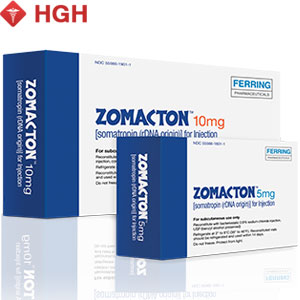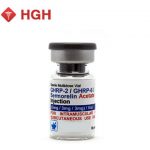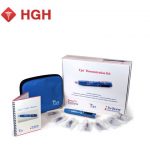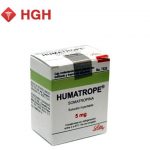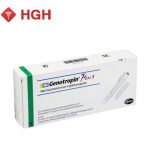 This page provides information for how to use testosterone injections, and can be seen as a testosterone use guide. However, it's important to note that consultation with a doctor is always necessary and this page should only be treated as a testosterone usage guide.
This page provides information for how to use testosterone injections, and can be seen as a testosterone use guide. However, it's important to note that consultation with a doctor is always necessary and this page should only be treated as a testosterone usage guide.
To ensure testosterone use is administered correctly, and even more importantly, safely, care must be taken when taking testosterone replacement therapy with subcutaneous injection, as with any subcutaneous injection. Testosterone usage for injection is usually in the form of testosterone cypionate or testosterone enanthate. They come in multiple concentrations, so before taking an injection, its beyond important to be sure that your intended dosages takes into account the concentration of the testosterone serum.
It's always important to use a sterile suitable needle and syringe! As with all injections, with testosterone usage it is BEYOND important to use a sterile, never before used needle when administering testosterone. Dirty needles can spread blood-borne diseases like hepatitis and HIV. With that said, use a clean sealed capped needle every time you give a testosterone injection - if you're unaware of how to use testosterone injections - this is the first thing you must learn.
Next, testosterone usage requires one to wash your hands and put on sterile gloves. This is to reduce the risk of an infection. Keep your hands clean when giving an injection.
Why are Testosterone Injections Prescribed?
Testosterone replacement therapy essentially involves the use of bioidentical testosterone to boost the natural testosterone levels in men and women. Bioidentical testosterone is chemically similar in nature to the testosterone made by the body.
The administration of testosterone injections helps to restore hormonal balance and improve symptoms such as hot flashes and low libido in females. Men benefit from improvement in erectile dysfunction, low semen production, low sex drive, loss of muscles mass, or hair loss. Testosterone injections are available by prescription only and patients must carefully follow the steps on how to use testosterone injections at home.
Testosterone Injections Administration
Testosterone injections administration is usually done by a doctor. However, testosterone injections self administered can be just as effective if you carefully follow the directions by your doctor for taking the medication. Additional directions may be found on the prescription label. It is important to take the medication as prescribed to reduce side effects and avoid the risks of infection or overdose. You can ask your pharmacist to explain further if you are not sure what to do.
Your doctor may continue to monitor you to ensure you are receiving the right dose required to improve your symptoms. This is necessary since your needs may fluctuate with time. In some cases, your doctor may need to adjust your dose or stop you from using the drug altogether.
Dosage
Testosterone is supplied in concentrations of either 100 mg/mL or 200 mg/mL. Your doctor will determine which concentration is right for you when deciding your dose. Testosterone injection average dosage will depend on several factors including the cause of low testosterone levels and severity of your symptoms. Testosterone injection dosage for females is typically different than in males. You should also take only the recommended amount of testosterone injections dosage per week.
Testosterone injection dosage for females
Testosterone injection average dosage varies based on gender and the condition being treated. Females taking bioidentical testosterone by injection should take the usual recommended dose of ½ ml every 3-4 weeks. Your actual dosage will be on the prescription label.
Steps for testosterone injection administration
The administration of testosterone injections is not difficult to follow once you pay attention to the step-by-step instructions. Further, testosterone injections self administered should be done with the correct needle. As recommended, testosterone injections needle size can be 22-23 gauge and 1-1.5 inches in length. The exact needle size depends on the thickness of the skin or tissue at the injection site. Your doctor may recommend you use a needle with a larger bore to draw up the medication then change to the recommended size needle to carry out the injection procedure.
- Step: Gather all supplies needed to take the injection.
- Step: Wash hands thoroughly with antibacterial soap and water before handling the medicine. Wear a pair of sterile gloves to prevent transmission of bacteria or other organisms.
- Step: Use an alcohol wipe to clean the top of the bottle containing the hormones.
- Step: Pull back the syringe plunger to the recommended dosage amount. This allows air into the syringe.
- Step: Insert the needle into the testosterone vial and press the plunger to release the air. Tilt the vial and draw the plunger backward to fill the syringe to the correct dosage amount.
- Step: To release tiny air bubbles, flick your index or middle finger against the side of the syringe then press the plunger gently.
- Step: Clean the injection site with an alcohol wipe and allow it to air dry
- Step: Stick the needle into the site (arm, thigh, or buttock). Pull back the plunger gently to look for signs of blood. (Blood in the syringe means you’ve hit a vein.)
- Step: If there is no blood, release the testosterone solution into the muscle. Remove the needle and dispose of safely.
- Step: Disperse the medication by gently rubbing the injection site.
What are the Side Effects of Testosterone Therapy?
Due to the possible risks of side effects when taking this medication, you should consult your doctor before taking it. People who take testosterone may experience the following side effects:
- Hot flashes
- Oily skin or acne breakout
- Fluid retention
- Worsening of sleep apnea
- Decreased urine or trouble urinating
- Growth of breast tissue
- Reduction in size of testes
- Increase in red blood cell count
- Changes in cholesterol levels
- Infertility or decreased sperm count
- Inflammation at the injection site
What precautionary measures should I take?
- Take the medication only if prescribed to you by your doctor
- Tell your doctor if you’re pregnant as testosterone therapy is not indicated in pregnant women
- Tell your doctor about all medical conditions you have or have a history of, especially sleep apnea, prostate cancer, or breast cancer. People with these conditions should not be treated with this medication
- Follow instructions on the prescription label for additional directions
- Use sterile needles to administer the injection to avoid the spread of infection and blood-borne diseases such as HIV and hepatitis.
- When administering the medication, prevent the vial from touching unsanitized surfaces.
- If the needle accidentally falls, dispose of it and use a new, sterile needle.
- Ensure you aspirate the syringe to remove air bubbles from the medicine. This is to prevent air embolism.
IMPORTANT WARNINGS
- Do not take a larger dose of the medication or take it for longer than prescribed
- Do not exceed the average testosterone injections dosage per week
- This medication is not indicated for use in children under age 12 or for bodybuilding
- Follow instructions on testosterone injection storage temperature to ensure the medicine continues to be safe for use. Store the medicine at room temperature. Do not freeze.
- Do not use if the medication is expired or the solution has particles or is discolored.
- Failure to heed testosterone injection storage temperature may result in “crystallization” or separation of the testosterone within the medicinal solution. Medicine used in this state can cause pain and swelling at the site of the injection.
- The testosterone injections needle size should be carefully chosen to avoid pain or swelling at the injection site.
- Call your doctor right away if you experience severe or sharp shooting pain
- Speak with your doctor if you notice abnormal redness, swelling or discomfort at the injection site
- Testosterone shots can cause blood clot in the veins or blockage in the arteries in the lungs.
- The risk of certain health problems may increase. They include heart problems such as heart attack or stroke, liver problems, and worsening of enlarged prostate or pre-existing prostate tumors.
- Keep medicine safely stored away from children and pets
Our doctors and medical specialists have years of expertise in treating clients with hormonal imbalances. The different types of treatments available are testosterone replacement, growth hormone therapy, estrogen therapy, and progesterone therapy. Testosterone therapy should be taken only in cases where the benefits outweigh the risks. You will be thoroughly evaluated to ensure this treatment is suitable for you.
